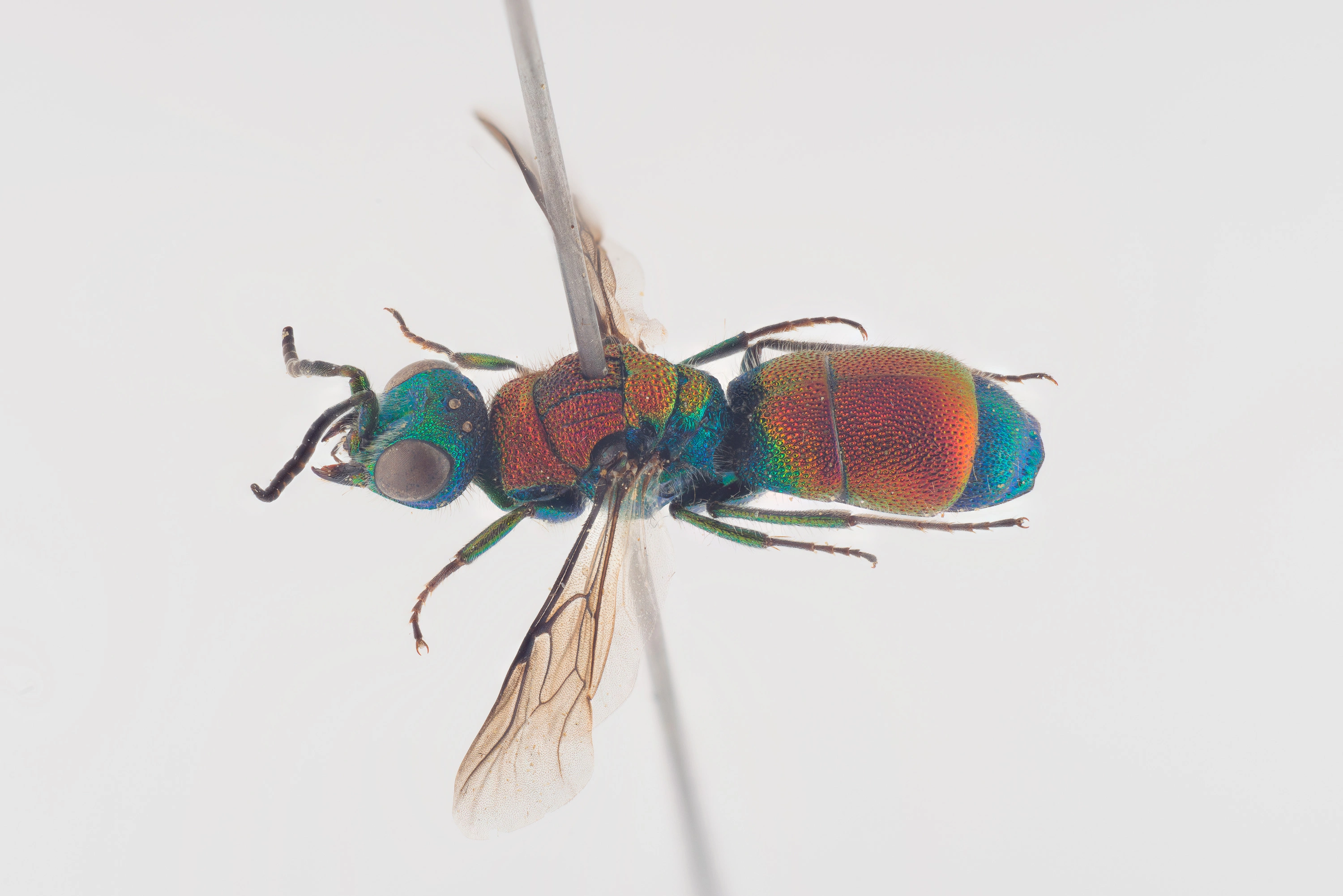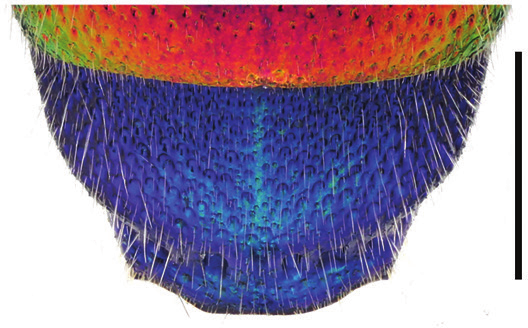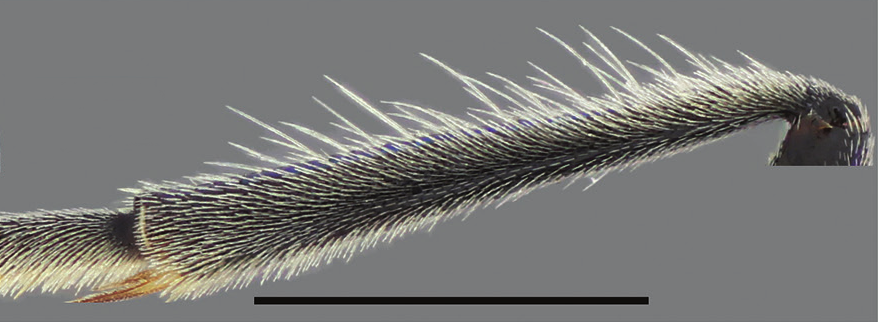Chrysis viridula
A relatively common species in southern parts of Fennoscandia occuring in different sandy areas and warm slopes. Hosts are Eumeninae in the genus Odynerus. The unique colour pattens of this species makes it easy to identify.
- Innhold
- Diagnosis
- Distribution
- Biology
Diagnosis
Figure 79
T3, dorsal view: C. viridula ♀. Scale 1 mm.
Figure 166
Metatibia: C. viridula ♀. Scale 1 mm.
Length 6–9 mm.
The species is easy to recognise due to its distinctive colouration: the head, lateral and ventral parts of the mesosoma (including legs) and T3 are green, blue or violet, whereas the dorsal parts of the mesosoma, most of T1 and the entire T2 are red. The setae medially on the metatibia are longer than the tibial width (shorter in C. pulcherrima). The apical teeth of T3 are often shallow and indistinct (Fig. 79).
Distribution
Denmark, Estonia, Finland, Latvia, Lithuania, Norway, Sweden. Common.
Trans-Palearctic: from western Europe to Russian Far East, Korea, China and Japan (Linsenmaier 1997, Kurzenko and Lelej 2007, Rosa et al. 2014).
Be aware that the records present in the GBIF map may be misleading for some countries due to unrevised data sets or missing information.
GBIF Taxon: Chrysis viridula L.Biology
Habitat: sparsely vegetated areas with clay or sandy soil, gardens. Adults occasionally visit flowers of Apiaceae (Linsenmaier 1997, Rosa 2004, our own obs.).
Flight period: early June to late August.
Host: Odynerus spinipes (Linnaeus), O. reniformis (Gmelin) and O. melanocephalus (Gmelin) (Vespidae) (Perez in Abeille de Perrin 1878, Adlerz 1910, Morgan 1984, our own obs.). The female oviposits in the host nest only when the host larva has completed its growth (Rosa 2006).


